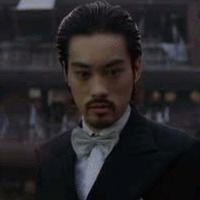Hustle and Flow – Human Nature and Kung Fu Hustle
A review of Kung Fu Hustle aka Gong Fu
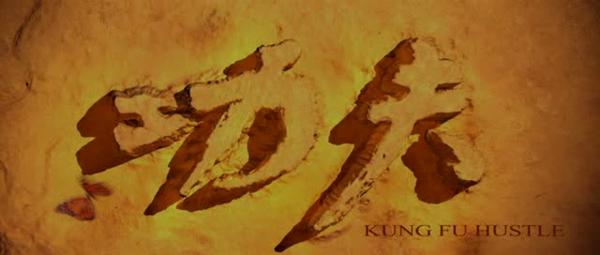 |
|
Fig. 1 – Title credit for Kung Fu Hustle
|
2004![]()
Directed by Stephen Chow Sing-Chi
Action Directors Yuen Woo-Ping and Sammo Hung Kam-Bo
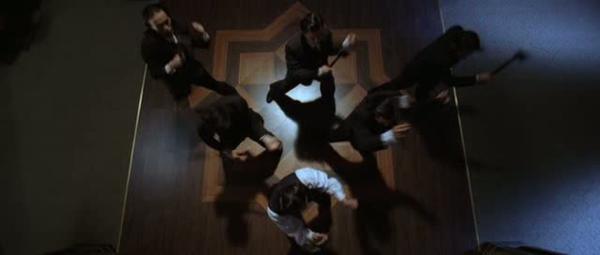 |
|
Fig. 2 – Axe Gang members dance in a downward triangle representing their subscribing to baser emotions
|
Abstract
Gong Fu (hereafter Kung Fu Hustle), is a perfect representation of human nature, complete with characters representing the ego, the super-ego, and the id. The setting and characters are mired in the secret world of Jiang Hu. Characters grow and evolve through the film, throwing off their layers of subterfuge and revealing their true selves.
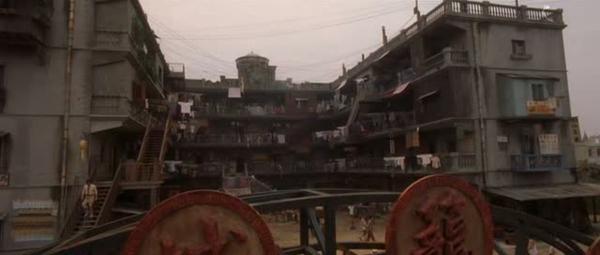 |
|
Fig. 3 – Pig Sty Alley
|
Introduction
As the opening credits of Kung Fu Hustle play, a butterfly flutters through a canyon that is a winding, twisting maze. A pullback reveals the canyon forms the characters of the title of the film, Gong Fu/Kung Fu Hustle. The butterfly’s presence foreshadows the final act, subconsciously readying the viewers for the change they will see. The canyon walls becoming the title let the viewers know that everything we need to see is there, we just have to look in the proper way.
Kung Fu Hustle is a martial arts comedy. At time the action becomes deliberately cartoony and over the top, those instances serving both comedic elements and further exaggerating the underlying role of the nature of humanity. Kung Fu Hustle‘s cartoonishness comes partially from it being among the last of the mo lei tau films, Stephen Chow growing as an artist and expanding his films’ reach to use things beyond sheer ridiculousness to get points across.
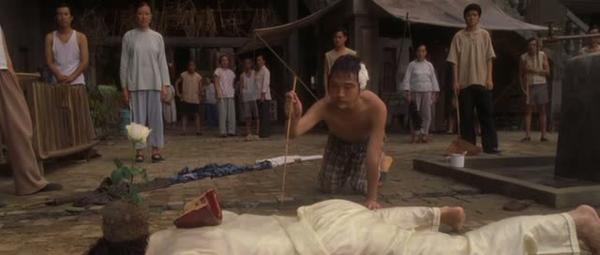 |
|
Fig. 4 – Cartoonish violence stylizes Landlord’s cover of having no martial skills
|
Characters:
|
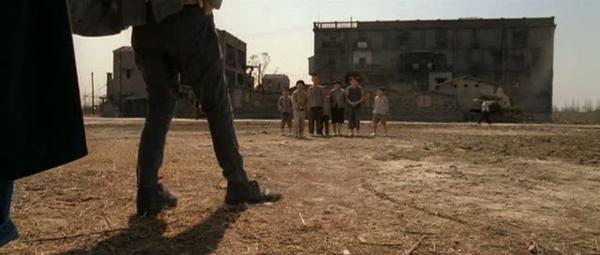 |
|
Fig. 5 – Sing traumatizes children subconsciously repeating his own tragic life-altering childhood
|
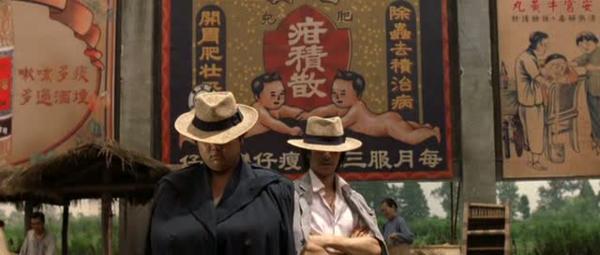 |
|
Fig. 6a – Despite the grandiose imitations, everyone sees directly through Sing and his friend’s scheme
|
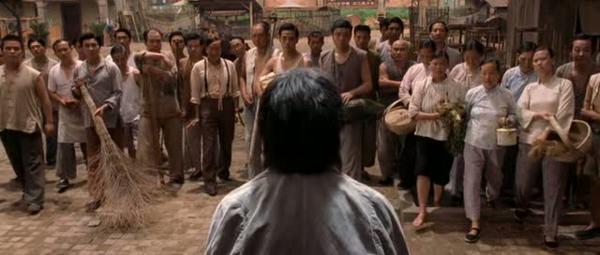 |
|
Fig. 6b – The crowd is not impressed
|
Historical Background
Jiang Hu is a world that runs parallel to normal reality but its inhabitants are members of secret societies, martial arts schools, adventurers, chivalrous knights, peasants and laborers, drunks, and other outcasts from society. It is commonly called the martial world, but it encompasses much more. Jiang Hu is a world of absolutes. There is right and wrong, good and evil, black and white. There is not an in between, and there is no confusion as to what is righteousness and what is villainy. Jiang Hu has two major parts, wulin and lulin.
The wulin is the world of martial arts and wuxia. Various schools, vying for power and position, dedicating their lives to mastery of skills. Adventurers go out to do right in the world, while those of the darker side search out money, fame, and power. The lulin is the world of the outlaw. Gangs, roaming the countryside or filling the dark alleys of the cities. Underground rings doing activities of questionable legality. Both elements of the wulin and lulin feature in Kung Fu Hustle: The Axe Gang being the clearest group of lulin, with the various martial masters representing the wulin.
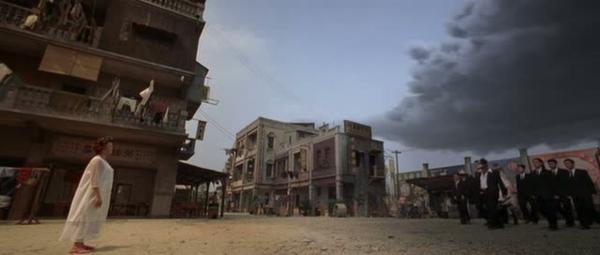 |
|
Fig. 7 – Dark clouds follow groups of Axe Gang members, foreshadowing their following of evil
|
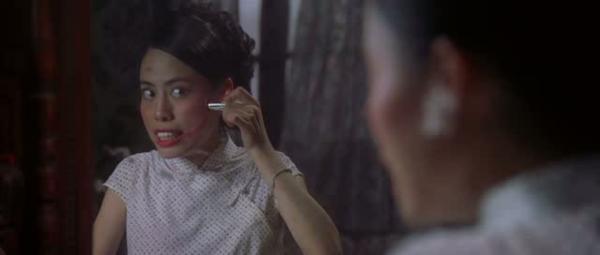 |
|
Fig. 8 – Innocent civilians are disrupted as the world of Jiang Hu collides around them
|
The Axe Gang
The Axe Gang begins Kung Fu Hustle consolidating their power in the city, violently taking town any who stand in their way or don’t immediately join up. The police are complacent due to the large amount of bribes (and any police who stood in their way would end up at the wrong end of one of their axes!) The Axe Gang’s control reaches throughout the city, only those that have nothing for them to take are excluded from their rule.
The Axe Gang are base savages, reveling in what they do, literally dancing in the streets after brutally murdering all their rivals and solidifying their power hold over the city. The Axe Gang are lost in their uncontrollable passion for evil desires. Desires controlled by the id. Their lust to control all is only stayed by whether their is anything worth controlling. Their aura is so dark that black clouds gather around them as they march on their victims. The suits and top hats the Axe Gang dresses in makes a mockery of the gentleman the clothing suggests they are. Their very appearance is good and proper warped to evil.
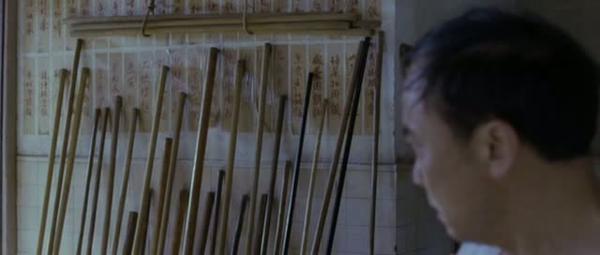 |
|
Fig. 9 – You cannot escape your destiny, it follows you everywhere
|
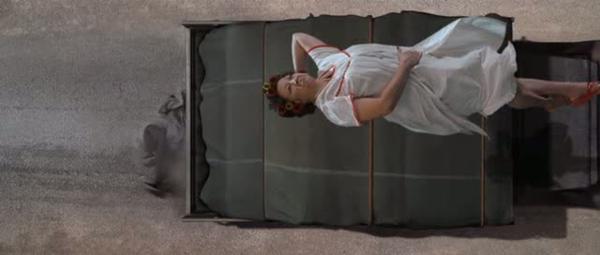 |
|
Fig. 12 – In the world of Jiang Hu, there are only two paths, above and below
|
Pig Sty Alley, Secret Fighters, and The Fated Lovers
Pig Sty Alley is the apartment complex that is the center of much of the first act. The first we see of the place is it in a bustle of activity with people out and about beginning their day. Morning baths, getting dressed, shops opening and preparing their wares. The people are living under the hand of what appear to be nothing more than average landlords, complaining of rent rates and attempting to mooch off of their renters in exchange for lower rates. These scenes of domestic life are mixed in between plot elements, great care is taken to make the complex feel like a living entity. It succeeds magnificently, Pig Sty Alley becoming a sort of character of its own.
Not everyone at Pig Sty Alley are who they appear to be. Three tenants at the location also gave up their kung fu life to live as common folk – a baker, a tailor, and a coolie, only to return to their roots when people are threatened by The Axe Gang. Their victories win them short term success, but they must leave the complex before they bring more danger to the inhabitants. Danger moves fast, in the form of hired assassins, and all three fall.
As the dying martial master Donut tells the landlords, “With great power comes great responsibility. There is no escaping it.” This Spiderman wisdom is repeated later by The Landlady as “The good cannot exist with the bad. You cannot escape your destiny.” The destiny of the Landlords was written before the film started, they are referred to as The Fated Lovers, and were known well enough in the martial world that they are recognized as those identities.
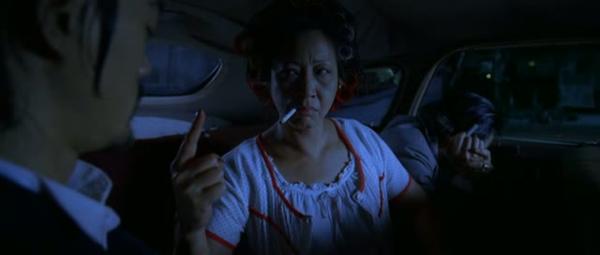 |
|
Fig. 14 – Landlady gives the Axe Gang leader a warning to follow the path of goodness
|
The Fated Lovers, Landlord and Landlady, suppress their kung fu fighting master powers and live a quiet life as owners of an apartment complex after the death of their son. Landlady violent and mean to her tenants, berating them for late rent and harassing them for not being able to better their lives. She regularly beats her womanizing husband, the violence cartoonish and raw.
The Fated Lovers are manifestations of the ego when we first encounter them, living their quiet lives show their benefiting in the long term. Each has urges of the id and super-ego, Landlord chases women while Landlady is violent, but the ego and long term life is fully in control. They both eventually realize they must stand against the Axe Gang and their killers and make sure their tenants are out of harm’s way.
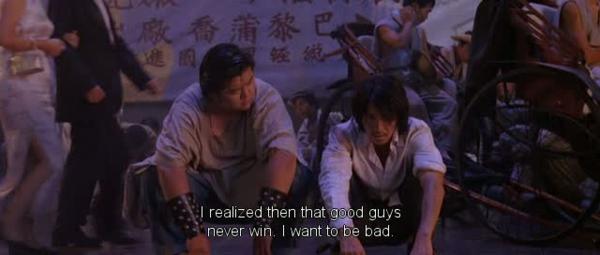 |
|
Fig. 10 – Sing attempts to deny his true self and take the route of evil to avoid further embarassment
|
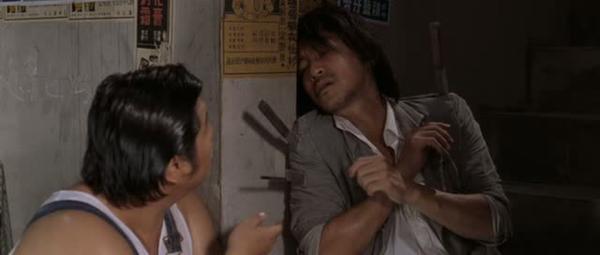 |
|
Fig. 11 – Sing and his friend are still to good-hearted to properly attack someone
|
Sing and Sing’s Friend
The face of savagery the Axe Gang displays shows that Sing and his friend are not evil or corrupt despite their attempts to act like they are. Sing and his friend cannot fight, cannot kill, cannot do anything except barely scrape by. They fail on even the most basic attempts to be lawless and evil. Their frustrations fail to make them realize that they are meant for more than
Sing was once a good kid who wanted to set right to the world, only to learn the hard way it is a difficult job. His first scene has him smashing a soccer ball belonging to local children, both tormenting the only things weaker than him and throwing type against his previous film. As we learn what drove Sing to be attracted to the dark side, the short scene takes on extra significance, as Sing himself was but a child. His attempt to learn martial arts and defend the weak was a lesson in overwhelming odds, as Sing is beaten and urinated upon by bullies tormenting a mute girl for her lollipop.
Licking his wounds and humiliated, Sing rejects his true self and begins to live a lie of epithumial embrace. Sing just isn’t any good at being evil, his lone success is stealing ice cream from a mute girl who loves him because of the good act he did as a child. Sing’s repression of his true self causes him to miss out on his action’s positive consequences.
Sing is unaware of how close he is to the glory he sought. He seems unable or unwilling to even discuss his ability to heal rapidly. The very ability, and the method he goes about it, give clues to the hidden martial talent in Sing.
When Sing and his sidekick attempt to bully the apartment complex, the tenants and owners immediately know they aren’t the real deal. As Sing and his friend can’t properly be threatening and evil, they are driven off, and it is only bad luck that brings the blade of the Axe Gang down upon Pig Sty Alley.
Sing’s Friend is a loyal companion, dutifully following his friend in scheme after scheme despite the lack of payoffs. One can infer that they met on the streets alone and broke and banded together, some of the good nature that Sing tries to hard to hide shining through and causing Sing’s Friend to become loyal. Sing’s Friend hints that he knows some of Sing’s past, in statements such as “Memories can be painful, to forget is a blessing.” Unfortunately, the lack of character development for Sing’s Friend (he doesn’t even have a name!) prevents further study of this character.
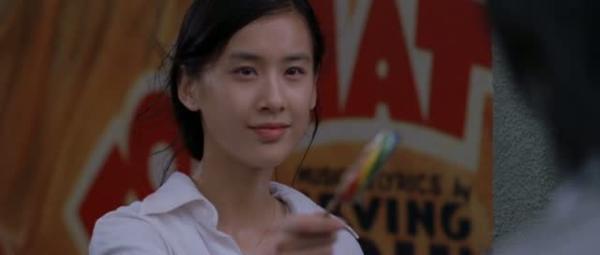 |
|
Fig. 15 – Fong (Eva Huang Sheng-Yi) is the constant reminder to Sing of his true self that he is denying, haunting him like a spectre
|
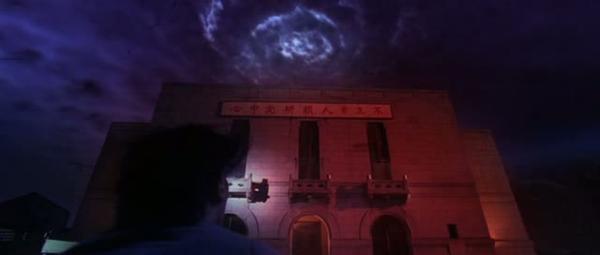 |
|
Fig. 16 – The Beast follows a path so dark the very sun refuses to shine on him
|
The Blind Killers and The Beast
The Blind Killers have moved beyond the simple warping of the Axe Gang, instead the warping has begun on their bodies, turning their fingers end in claws. As the Blind Killers set out on their targets, they attack with deception, hiding the warped evil until it is too late for their victims. Only those that are masterly powerful can defeat them, and they meet their doom at the hands of the Fated Lovers. Their battles consist of sending dangerous music towards their targets. The battles are two-directional, the combatants moving either towards or away from the Blind Killers, highlighting the duality of the Jiang Hu – there is only directions of good and evil, nothing in between.
 |
|
Fig. 13 – Evil strikes out in the direction of good, attempting to shift the balance
|
The Beast has suppressed his human nature to the point where he has reverted to animal form. While the Axe Gang requires a squad of members together to attract dark clouds, The Beast singularly has a black storm hovering over him. The Beast has dedicated his life to killing, searching for the great thrill of fighting opponents. Only The Beast was too good. All fell before him. Life became less of a challenge and more of a boredom. Desperate, The Beast searched and searched for those who could be worthy of fighting him. Even those who could teach him new lessons. But he found none. Eventually, The Beast became unkempt and disheveled, living in an asylum in preference of the stress of not finding a worthy fighting opponent. In the end, The Beast finds his wish, his great opponent, and even becomes a student of the great opponent. The Beast is no longer animal, but is on a journey back to humanity, his life having a purpose once more.
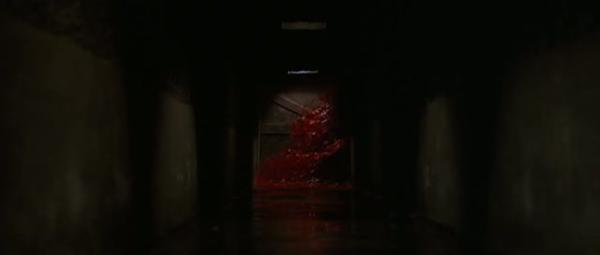 |
|
Fig. 17 – Sing’s subconscious gives him a warning to avoid the Beast, but it is not heeded
|
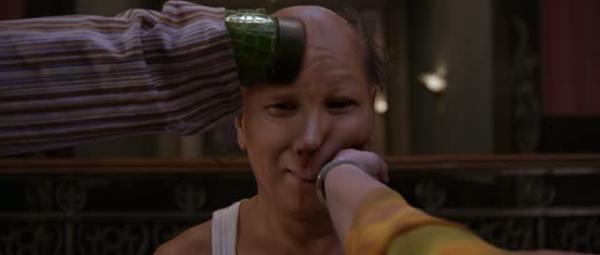 |
|
Fig. 18 – Good strikes evil
|
Transformation and True Self
After Sing is initially beaten to a pulp by The Beast, his chi flow becomes properly aligned. Sing’s head is clear and he is rapidly becoming The One. He draws a lollipop with his blood as last request, having realized what is important in his life. With the chi cleared and Sing rapidly healing himself, the movie even beats the audience over the head with the caterpillar-to-butterfly metaphor. There is no mystery as to what is transpiring.
This scene is a perfect example of Plato’s cave allegory from Republic, Book VII. Plato believes the soul longs to be freed from the prison of the body. Plato also represents mankind as prisoners chained in an underground cave, trapped to look at only the shadows on the wall, unable to turn their heads to see the opening and exit to the cave. Their focus on the shadows on the wall caused by fire at the cave entrance makes them think the shadows are reality. Humans cannot see beyond the shadows into the real world, trapped in the “real world” of their own prison.
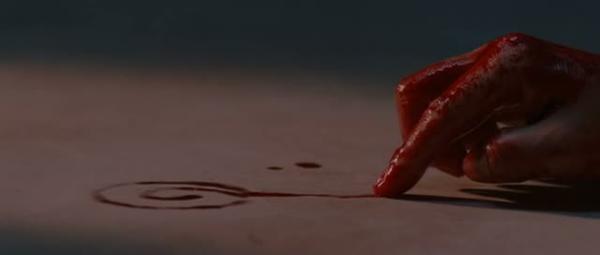 |
|
Fig. 19 – Chi aligned, Sing realizes his true path
|
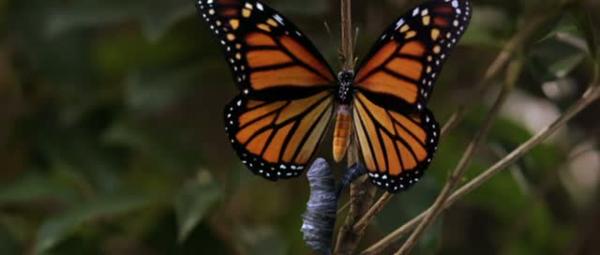 |
|
Fig. 20 – Butterfly metamorphosis is not an analogy the film fails to use
|
As Sing has his chi aligned and rapidly develops into the martial arts master he naturally is, Sing has broken out of the cave to taste freedom, and can return to the cave as a visitor instead of its prisoner. He can distinguish the shadows from reality. Sing no longer attempts to let his id win out, the super-ego is fully in control, and as a chivalrous man who dreamed to save the world as a child he doesn’t even hesitate to stop those that are searching to destroy him and his adopted family. Being beyond the world of shadows, Sing is calm, even bored while fighting through the Axe Gang henchmen. Sing is not vengeful, even after vanquishing his foes and defeating the animalistic Beast, Sing offers Beast apprenticeship of a true master, the very thing the Beast spent his life looking for. The Beast is the pure id, emotions so base as to be subhuman, but in the end is he brought back under control by the super-ego that is Sing.
Sing’s clarity of soul sends him to right the wrongs he has done during his period of confusion. He sets up a candy store, employing his friends and members of the Pig Sty Alley complex as atonement for the rejection of his true love.
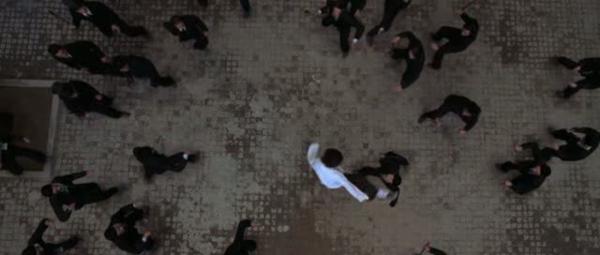 |
|
Fig. 21 – After becoming The One, Sing cannot be stopped by evil no matter how numerous
|
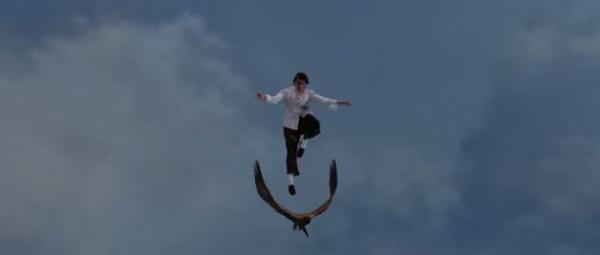 |
|
Fig. 22 – Sing’s ascent into the light gets a visual representation of ascent towards Heaven
|
Conclusion
Sing’s super-ego takes control of the id and ego, causing him to transform into his true self, the Chosen One. Sing and other characters shed their layers of subterfuge, and stop representing the ego or id and become controlled by the super-ego. Responsibility that comes attached to the skills of the characters catches up with them, and there is a confrontation between good and evil. Sing learns that evil doesn’t always win, and the true victory is being true to yourself.
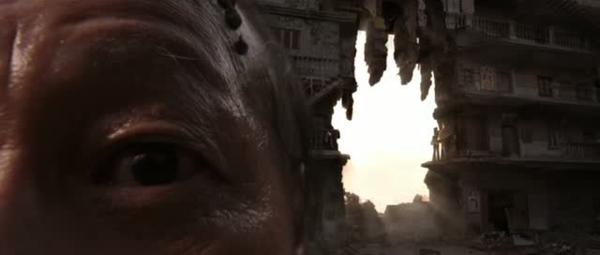 |
|
Fig. 23 – Sing first learned of the Buddha’s Palm as a lad, but his awakening allowed him mastery over the difficult maneuver with ease
|
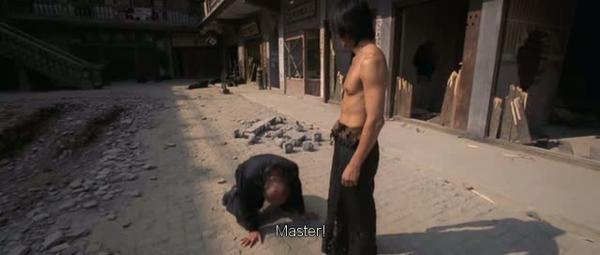 |
|
Fig. 24 – The Beast humbly and eagerly takes apprenticeship to Sing, who is beyond the simple nature of revenge
|
Rated 9/10 (Falling down, Crocodile gang leader, axe gang thug, SPLAAT!, healing damage, lollipop of destiny, return of lollipop of destiny, young Sing, young Fong)
Please give feedback below!



